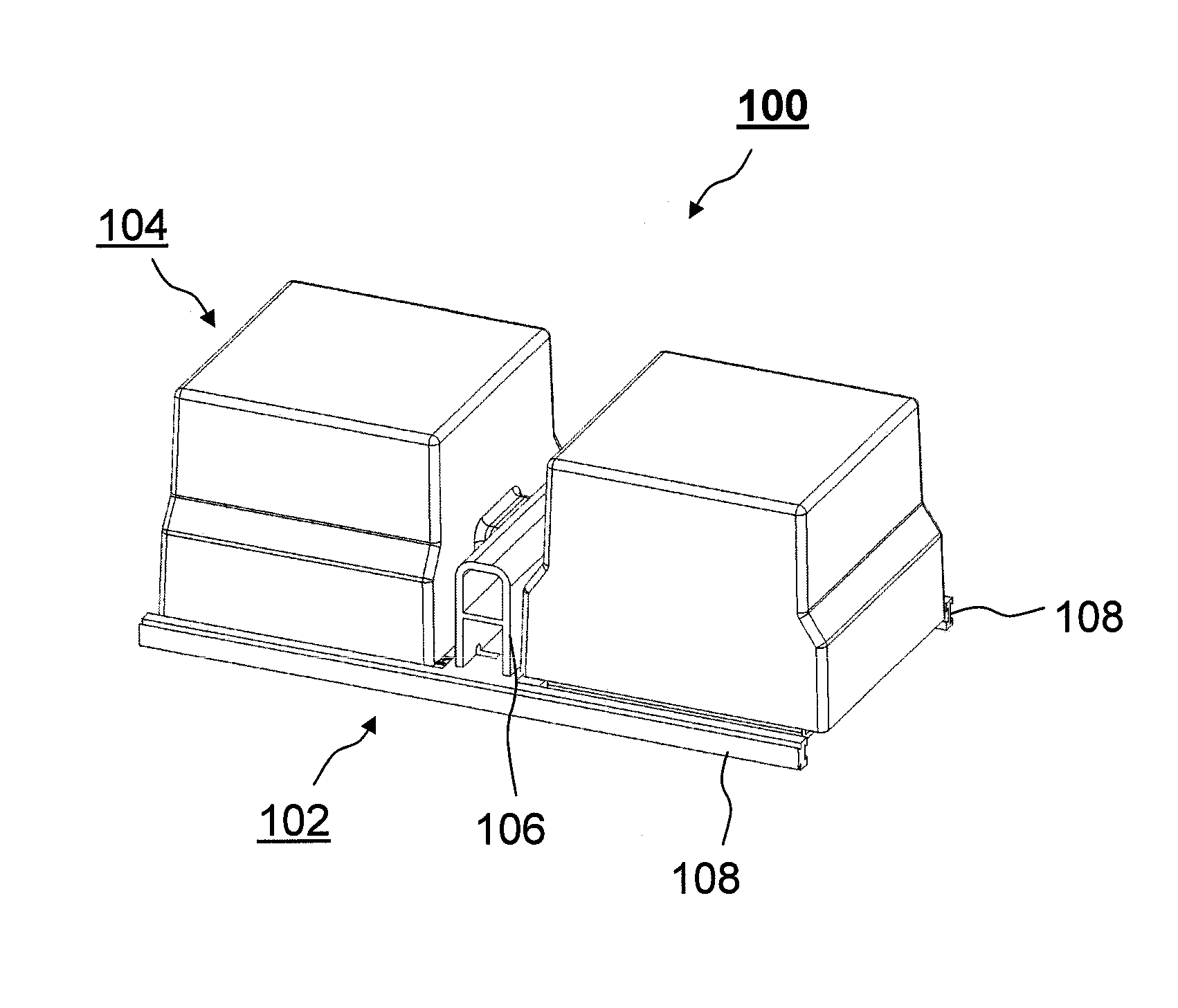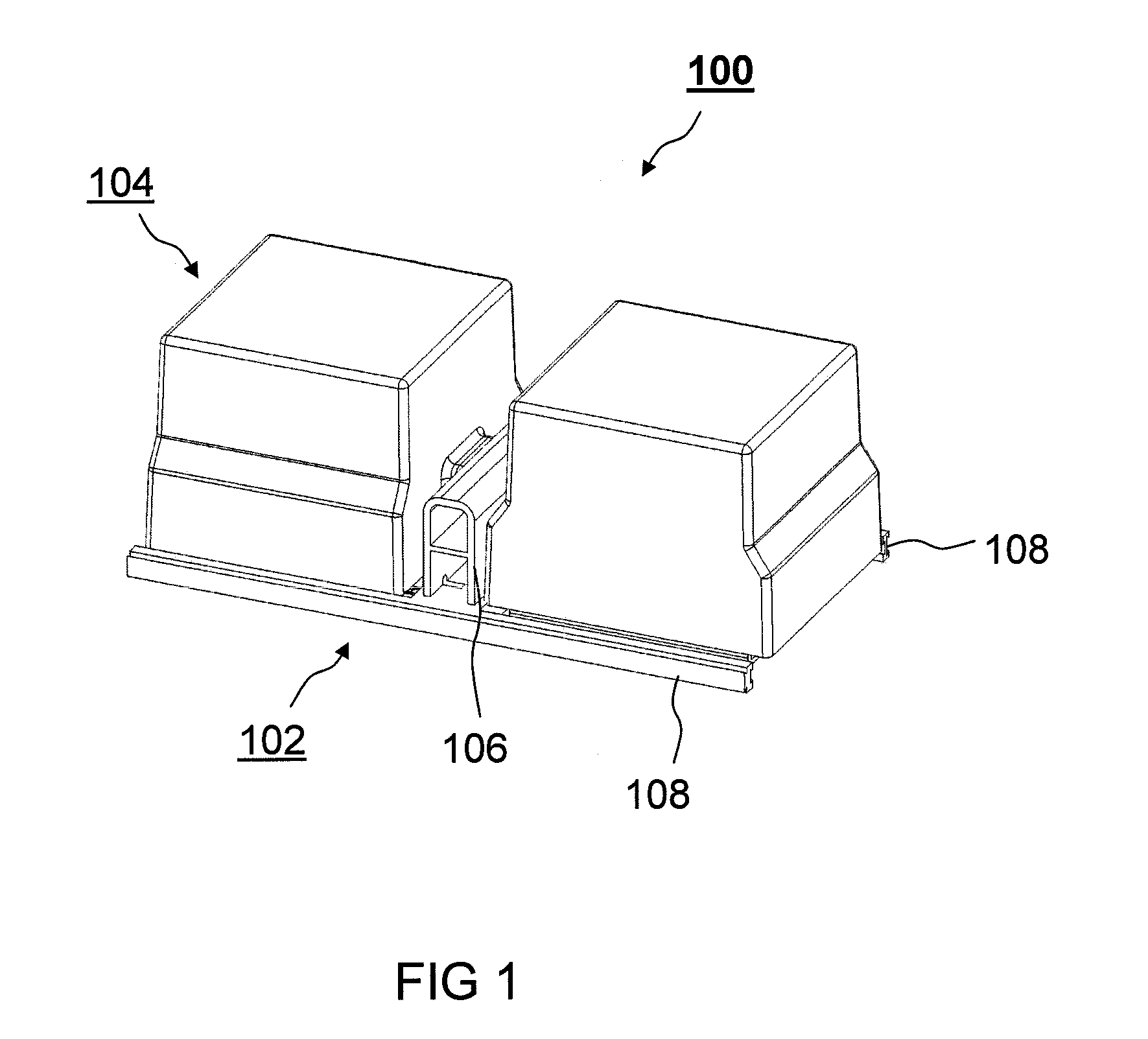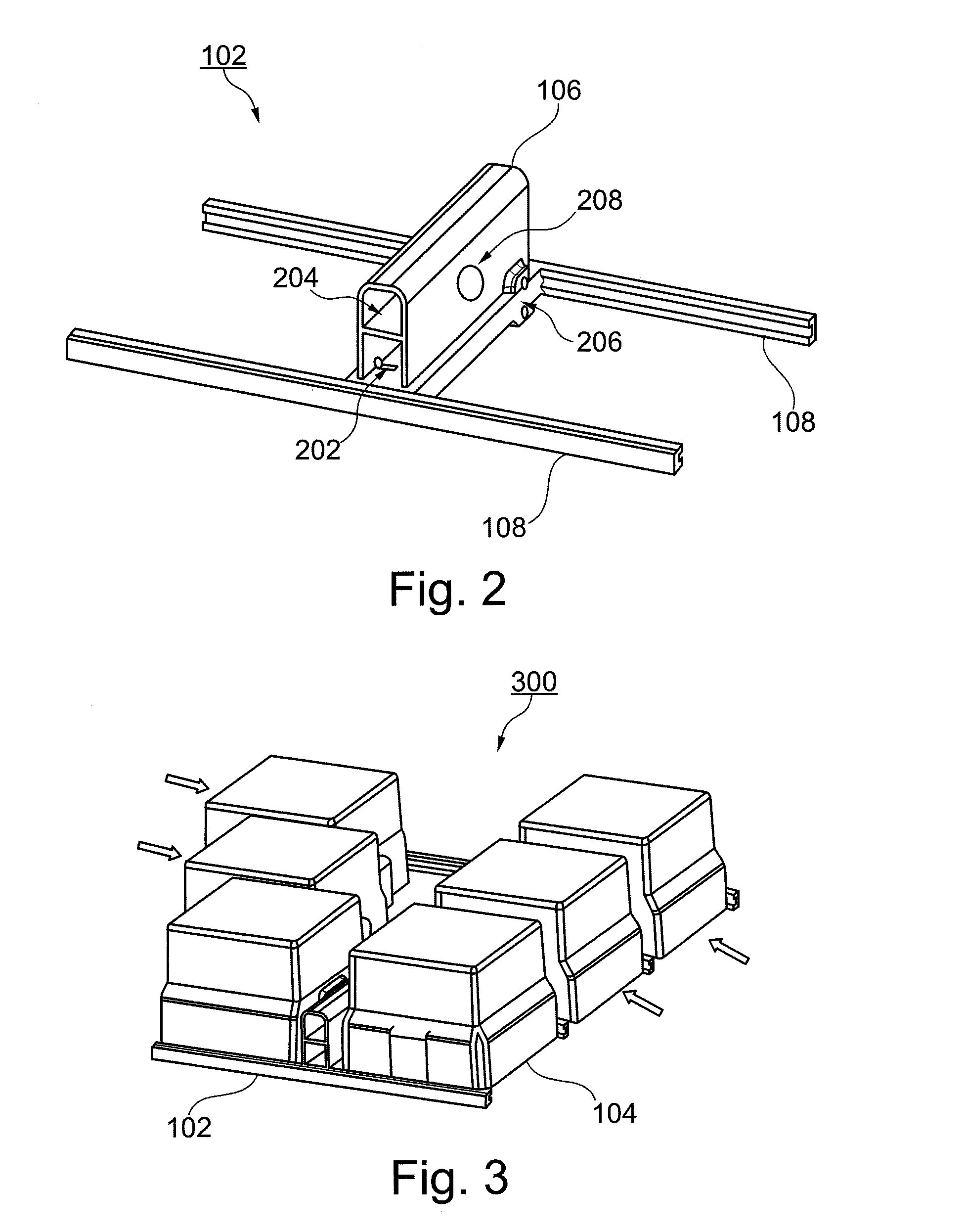Modular battery structure
a module and battery technology, applied in the direction of cell components, electrical equipment, cooling/ventilation/heating modification, etc., can solve the problems of increasing the cost of individual module replacement, permanently damaging the energy storage device, and having a negative effect on the function and performance of the energy storage devi
- Summary
- Abstract
- Description
- Claims
- Application Information
AI Technical Summary
Benefits of technology
Problems solved by technology
Method used
Image
Examples
Embodiment Construction
[0044]In the following description of the preferred exemplary embodiments of the present invention, the same or similar reference symbols are used for the elements with a similar action and shown in the different drawings, whereby a repeated description of these elements is omitted.
[0045]FIG. 1 shows a perspective view of a modular system 100 according to an exemplary embodiment of the invention. Shown is a module support 102, which supports two energy storage modules 104. Module support 102 has a support housing 106 with two opposite side walls and two rails 108, which are arranged in each case approximately at right angles to support housing 106 and in each case extend in opposite directions away from support housing 106. Each of energy storage modules 104 is arranged adjacent to one of the side walls of support housing 106. Energy storage modules 104 can be connected to module support 102 by insertion into rails 108, in each case from opposite directions.
[0046]FIG. 2 shows a pers...
PUM
| Property | Measurement | Unit |
|---|---|---|
| resistances | aaaaa | aaaaa |
| forces | aaaaa | aaaaa |
| sizes | aaaaa | aaaaa |
Abstract
Description
Claims
Application Information
 Login to View More
Login to View More - R&D
- Intellectual Property
- Life Sciences
- Materials
- Tech Scout
- Unparalleled Data Quality
- Higher Quality Content
- 60% Fewer Hallucinations
Browse by: Latest US Patents, China's latest patents, Technical Efficacy Thesaurus, Application Domain, Technology Topic, Popular Technical Reports.
© 2025 PatSnap. All rights reserved.Legal|Privacy policy|Modern Slavery Act Transparency Statement|Sitemap|About US| Contact US: help@patsnap.com



